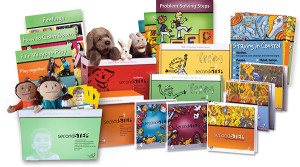When kids feel good, they do good: The Positive Action program
Positive Action is a systemic program driven by the intuitive philosophy that kids want to learn when they feel good …
Choosing effective SEL programs for Teens: The 2015 CASEL Guide
Building upon CASEL’s 2005 Safe and Sound Guide, the 2015 CASEL Guide considers advances in social and emotional learning …
Choosing effective SEL programs for preschool and elementary children: The 2013 CASEL Guide
Building upon CASEL’s 2005 Safe and Sound Guide, the 2013 CASEL Guide considers advances in social and emotional learning …
Finding SEL programs that work – CASEL’s 2005 Safe and Sound Guide
The 2005 Safe and Sound Guide was CASEL’s first compendium of social and emotional learning (SEL) programs, and was designed …
Choosing the best assessment approach for evaluating the impact of SEL on Middle School Youth
Commissioned by the Raikes Foundation, this report reviews existing assessment tools designed to measure the social and emotional well-being of …
Implementing and assessing SEL in preschool and elementary school
This 2011 brief, prepared for the National Center for Mental Health Promotion and Youth Violence Prevention in the United States, …
High-Quality SEL: What do we look for?
This is a 2014 handout from CASEL that highlights six key features of high-quality standards for social and emotional learning …
Evaluating SEL competencies: Assessment measures for preschool and elementary age students
This compendium, published in 2010 in the United States and supported by CASEL and the University of Illinois – Chicago, …

